The Neural Engineering Center (NEC) was established in 2007, and aims to meet the rehabilitation demands of various functional disorders, deficiencies, and neurodegenerations related to movement, sensation, cognition, and hearing, which are caused by the abnormal conditions and pathologies of neuromuscular and blood circulation systems. By using the emerging techniques and tools in the interdisciplinary fields of neural engineering, biomedical engineering, and informatics, NEC works on understanding the coupling mechanisms of neuromuscular and blood circulation activities, exploring the new theories and methods to enhance the repairmen and rehabilitation of dysfunctions of neuromuscular organs and systems, and developing the high-performance and innovative technologies, devices, and systems for the people with a lost and/or dysfunction of neuromuscular and neurovascular systems. Finally, the team would be pioneering a research field called as Neuro-Muscular Informatics and Engineering (NMIE). Currently, NEC focuses on the flexible sensing materials and flexible electronics, multimodal physiological-signals detection, motor and sensory reinnervation, modulation and stimulation of nerves, skeletal muscles and bones, as well as blood circulations, neural machine interface technology, and human-machine intelligent interaction. And we develop the multifunctional intelligent prostheses, rehabilitation and assistive robotics, neuromuscular-function enhancement and modulation systems, intelligent wearable devices, hearing detection and rehabilitation, and blood pressure modulation equipment.
Currently, NEC has a total of 99 people, including 8 full professors, 11 associate professors, 11 post-doctors, and 49 postgraduate students. Over the past 14 years, NEC has made the significant achievements in research funding and scientific outcomes. The team have been funded by more 200 research projects with a total of about 210 millions (RMB), including National Natural Science Foundation of China projects, 863 projects and 973 projects of the Ministry of Science and Technology, etc. Totally, 484 papers have been published and 346 patents have been filed and 78 invention patents have been already authorized.
1) Synchronous and High-Resolution Acquisition System of Electrophysiological and Blood Microcirculation Signals of Neuromuscular Activities
The regularly synergic activities among the nerves, muscles, and blood microcirculation of neuromuscular systems ensure the organic functions of human beings. Since many severe clinical diseases are directly and/or indirectly caused by the dysfunctions and/or disorders of neuromuscular systems, it is very essential and significant to accurately monitor all the physiological responses corresponding to the coupling activities of the peripheral nerves, muscles, and microcirculation for understanding the pathology of these diseases, their developments and functional recoveries. In this project, we propose to develop a high-resolution acquisition system that could synchronously record both the electrophysiological signals and blood-microcirculation responses (hemodynamics and blood oxygen) of neuromuscular activities on a neuromuscular tissue or an organ.
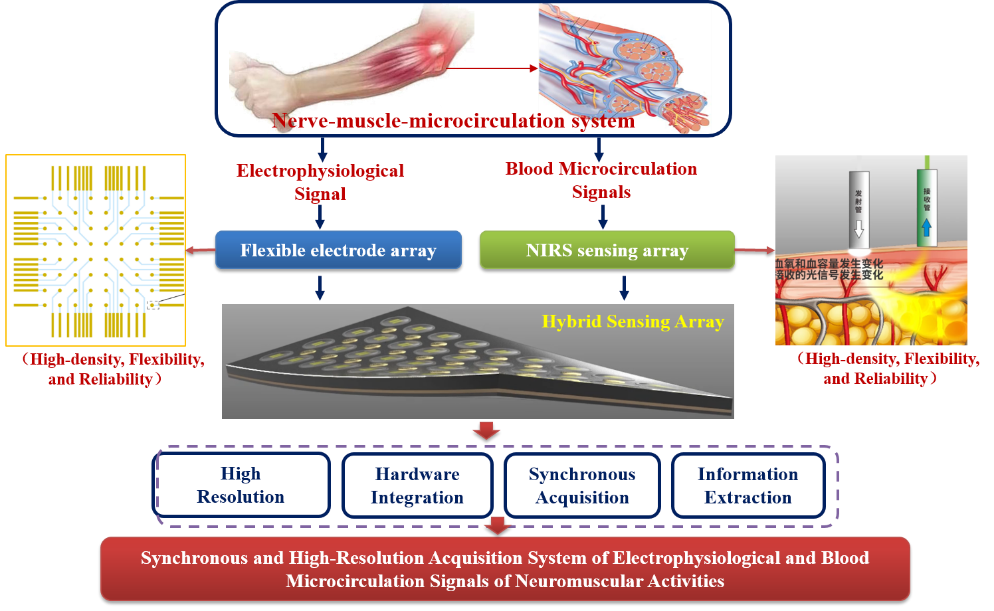
2) Bidirectional Neural Pathway for Multifunctional Prosthetic Technologies and Systems
The multi-functional intelligent prosthesis (upper/lower limb) technology and system of bidirectional neural pathway are studied, which use flexible sensing to obtain high resolution neuromuscular electrical signal and decode the signal, so as to realize accurate recognition of motion intention. The neural feedback of prosthetic sensory information is realized by detecting, fusing and decoding sensory signals. By mimicking the biomechanical characteristics of human body, a low-cost, lightweight, structural and motion bionic prosthetic body structure is developed. The applications verification platform of artificial limbs that integrates neural electrical information, kinematics and dynamics information is established to realize the compliant control of multi-functional intelligent artificial limbs with motion-sense bidirectional neural pathways.

The multi-functional intelligent prosthesis technology and system
3) Flexible Functional Materials and Sensor Technology Applications
The dual micro-structure piezoelectric system of space charge electret in polymer is developed, and the application of flexible sensing technology in human motion recognition, body sign signal detection, robot hand touch sensing are carried out. This research also focusing on developing a new generation of flexible and stretchable electrode materials and sensors with large tensile rate, high density, ultra-thin, ultra-narrow, high adhesion and excellent stability properties, for the great application prospect on wearable devices and the acquisition of high density surface electromyographic signals, implantable cortex electroencephalogram signals, electrocardio signal signals and in vivo nerve signals.
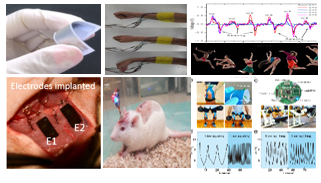
Flexible functional materials and sensor technology applications
4) A companion Robot to Assist Walking, Sitting Down and Standing Up for Older People’s Exercise Rehabilitation
This research focusing on the key issues such as lower limb movement rehabilitation and companion care for the elderly, emphasis on the motion control, intelligent recognition and automatic companion of companion robots. By using multi-joint design, six-axis acceleration sensor, infrared sensor automatic tracking and system integrated speech recognition functions, this research aims to develop the intelligent escort robot and its system.
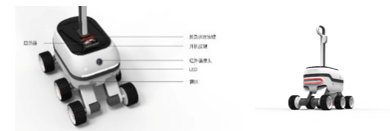
Intelligent escort robot
5) Wearable Pre-impact Fall Technology and System
Falling is a common injury incident for the elderly, which is an important inflection point of disability for the elderly, and a significant cause of disability and death. It has become a major social demand to solve the problem of elderly falls in China. The project focus on the technical requirements of early warning and intervention protection about the elderly falling, break through the fast and accurate recognition method for pre-impact fall alarming, develop the wearable pre-impact fall alarming system, wearable fall protection airbag and fall prevention health management monitoring platform, etc.
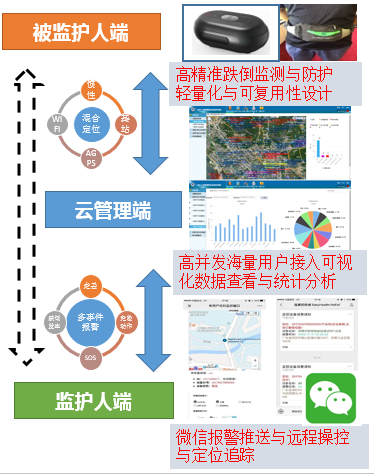
Wearable pre-impact fall technology and system
6) Non-invasive Screening and Rehabilitation Technology of Hearing Disorders
The primary cause of deafness in children is hearing loss, which is also the second major problem that troubles the health of the elderly. Early detection of hearing loss is of great significance to prevent the occurrence of deaf children and to improve the quality of life of the elderly. This research is mainly focused on the non-invasive, accurate and high-resolution rapid detection of hearing loss, and the diagnosis of auditory conduction, peripheral and central abnormalities, so as to locate the causes of hearing impairment objectively and accurately, and provide experimental basis for subsequent targeted intervention, treatment and rehabilitation.
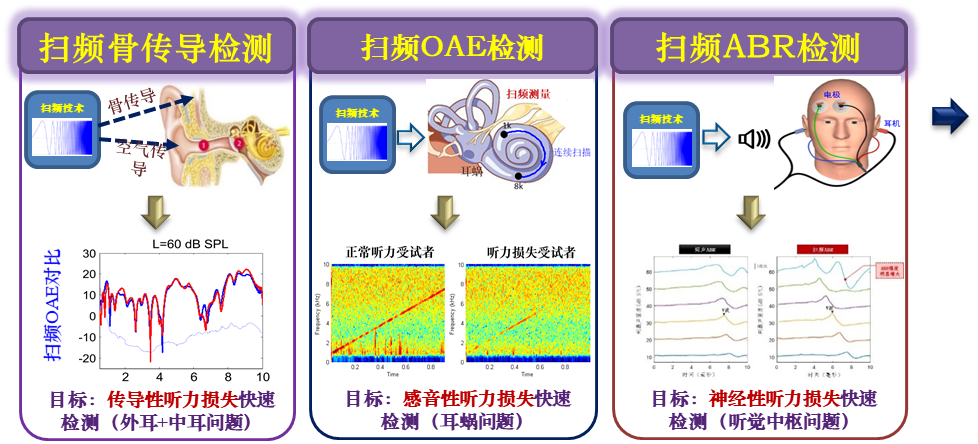
Rapid non-invasive detection of hearing disorders
Title:Senior Engineer
Email:zhouxm@siat.ac.cn
Areas of Interest:physiological signal acquisition
Title:Associate Professor
Email:samuel@siat.ac.cn
Areas of Interest:neurorehabilitation technology; myoelectric control and pattern recognition; clinical decision support systems
Title:Associate Professor
Email:wanghui@siat.ac.cn
Areas of Interest:motor function perception and enhancement
Title:Associate Professor
Email:wh.lin@siat.ac.cn
Areas of Interest:cardiovascular health informatics
Title:Associate Professor
Email:nf.jiang@siat.ac.cn
Areas of Interest:pain diagnosis and rehabilitation
Title:Associate Professor
Email:li.yc@siat.ac.cn
Areas of Interest:brain-machine interfaces
Title:Associate Professor
Email:wei.tang1@siat.ac.cn
Areas of Interest:biomedical materials
Title:Associate Professor
Email:lixx@siat.ac.cn
Areas of Interest:biomedical signal processing; pattern recognition and human-computer interaction